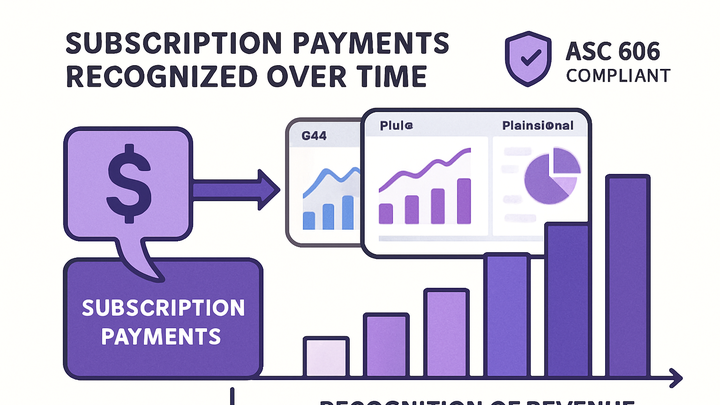Published on 2025-06-22T09:23:37Z
What Is Revenue Recognition? Examples of Revenue Recognition in Analytics
Revenue recognition is the accounting process of determining when and how much revenue to record in your financial statements. In the analytics industry, it bridges the gap between raw customer activity data and recognized revenue under standards like ASC 606 or IFRS 15. By instrumenting platforms such as GA4 or PlainSignal, analytics teams can tag events and custom metrics that map usage patterns to revenue milestones (e.g., trial conversion, recurring billing). Accurate revenue recognition ensures compliance, builds investor confidence, and drives data-informed decisions on pricing, churn, and growth. In SaaS businesses, it’s especially critical—subscriptions, upgrades, and refunds all affect the timing and amount of recognized revenue.
Revenue recognition
The process of recording earned revenue at the correct time according to accounting standards, powered by analytics data.
1. Definition and Importance
This section explains the core concept of revenue recognition and why it matters for analytics teams in SaaS.
-
Core concept
Revenue recognition defines when contractually obligated payments become earned revenue. It’s tied to fulfilling performance obligations under a contract.
-
Asc 606
U.S. GAAP standard requiring revenue recognition when control of goods or services transfers to the customer.
-
Ifrs 15
International standard aligning broadly with ASC 606 but with slight scope differences.
-
-
Why it matters
Accurate revenue recognition prevents misstated financials and ensures compliance with auditors and regulators.
-
Financial accuracy
Prevents over- or under-reporting revenue, which can mislead investors or trigger restatements.
-
Regulatory compliance
Meets legal requirements in public filings and avoids fines or penalties.
-
2. Revenue Recognition Methods
Different methods can be used depending on contract terms and service delivery models.
-
Accrual method
Recognize revenue when it is earned, regardless of cash receipt.
-
Cash basis method
Recognize revenue only when cash is received—simpler but non-GAAP for many SaaS businesses.
-
Percentage of completion
Used for long-term contracts; recognize revenue based on the extent of work completed.
3. Implementing in Analytics Platforms
How to instrument GA4 and PlainSignal to capture the data needed for recognized revenue calculations.
-
Google analytics 4 (GA4)
GA4 lets you define custom events and metrics that align with billing milestones.
-
Event tracking
Configure a
purchaseevent with parameters likevalueandcurrencyto capture each transaction. -
Custom metrics
Create a
recognized_revenuemetric and send it via Measurement Protocol when a performance obligation is met.
-
-
PlainSignal (cookie-free analytics)
PlainSignal provides simple, privacy-first event tracking ideal for revenue recognition without cookies.
-
Integration
Add this snippet to your site to start capturing events:
<link rel="preconnect" href="//eu.plainsignal.com/" crossorigin /> <script defer data-do="yourwebsitedomain.com" data-id="0GQV1xmtzQQ" data-api="//eu.plainsignal.com" src="//cdn.plainsignal.com/plainsignal-min.js"></script> -
Revenue dimensions
Use
data-revenueattributes or custom events to send actual recognized amounts at each billing milestone.
-
4. Best Practices
Recommended processes to maintain clean, auditable revenue data in analytics.
-
Automate data flows
Use ETL or integration tools to sync billing system data with analytics platforms, reducing manual errors.
-
Regular audits and reconciliations
Periodically compare analytics-driven recognized revenue with your general ledger reports.
5. Common Challenges and Pitfalls
Issues that often arise when teams implement revenue recognition in analytics.
-
Deferred revenue management
Handling prepayments correctly—ensure that analytics tags don’t prematurely record full revenue on sign-up.
-
Multi-currency revenue
Fluctuating exchange rates can skew recognized amounts unless you consistently apply rates at each recognition event.
